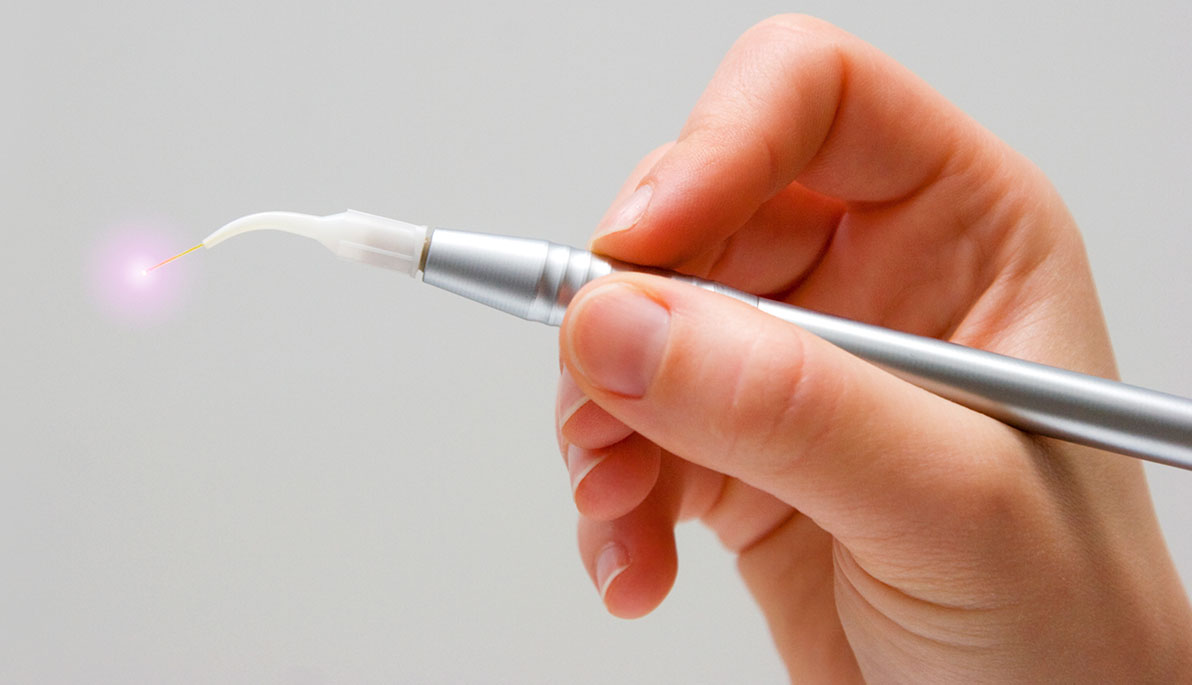
Associate Provost Lasers in on Dentistry
October 26, 2016
Drawing on his background in physics, optics, and calculus, Associate Provost for Academic Affairs Lou Reinisch, Ph.D., co-authored a paper showcasing how lasers can be beneficial in attacking bacterial colonies in human gums.
Reinisch along with David Harris, Ph.D., who heads a medical laser product firm, published their study, “Selective Photoantisepsis,” in the journal Lasers in Surgery & Medicine.
Bacteria colonies in human gums can cause inflammation and can develop into periodontal disease, which involves a more serious infection that breaks down the bones and tissues that support teeth. Reinisch and Harris set out to test the efficacy of lasers used to kill bacteria buried in gum tissue.
“The paper verifies or validates the use of lasers to kill bacteria and contribute to better health following periodontal treatments,” Reinisch said. “The findings are important because this opens up the possibility of tweaking a laser’s wavelength, power, and pulse duration to be the most effective for killing bacteria.”
For the study, Reinisch, an expert in laser surgery, created computer simulations showing what happens when various types of lasers are aimed at bacteria buried in different depths within gum tissues. He solved complex mathematical equations to produce virtual models for the lasers, gum tissues, and bacteria, and then produced video simulations from the computations.
“The study reveals what’s going on in the tissue, so I hope that we’re educating the medical professionals by demonstrating that you can do a good job of killing bacteria with certain lasers,” says co-author David Harris, Ph.D., director of Bio-Medical Consultants, Inc., which specializes in medical laser product development. “When you do this treatment, you remove an infection and allow tissue to regenerate. Getting rid of the infection means the tissue can heal without interference.”
In a first for the journal, the published results include video depictions of the computer simulations. Journal readers can actually see the soft tissue of the virtual gums and bacteria heat up and cool down as the simulated laser is scanned over the tissue.
The study’s methodology of simulating how laser light interacts with tissue has implications beyond dentistry; physicians and surgeons use lasers in various treatments, including vocal cord procedures and dermatological treatments, including those for toenail fungus.
Guided by the results presented in this study, both Reinisch and Harris expect that clinical trials will be designed to clinically validate their findings.
More Features

An Alumnus’ Commitment to the Environment
As an energy management graduate from New York Tech’s Vancouver campus, Jasdeep Gulati (M.S. ’22) is highly invested in educating people about environmental and climate sustainability.

Vancouver Faculty Win University-Sponsored Research Awards in New Program
The new Global Impact Research Grant (GIRG) program has been developed to keep Vancouver-based faculty connected to faculty and research projects being conducted on the university’s New York campuses.

Studying Climate Change One Degree at a Time
Junhua Qu (M.S. ’24) began her collegiate journey in Beijing. But, her interest in climate change took her to New York Tech’s Vancouver campus to study energy management.